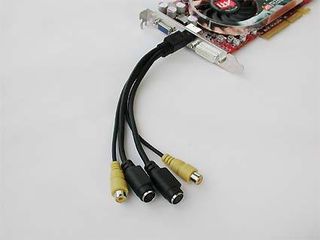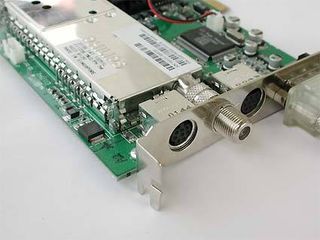THG Graphics Card Buyer's Guide
Video In & Out
Nearly all cards come equipped with video-out functionality, but video-in features are much rarer. Often video-in is only present on so-called "ViVo" models, which offer connection options for video sources via composite (RCA video) or S-VHS cables. However, these are of no help for connecting digital video cameras, as these tend to require a FireWire jack that is only rarely found on a graphics card. You can only watch television via video-in if the source signal is coming from a tuner, i.e. a video recorder, satellite receiver or TV.
As an alternative, graphics cards with an integrated TV tuner are also available. ATI offers its All-in-Wonder series, while NVIDIA sells its Personal Cinema line. Of course, these cards cost more than the standard models. Also, bear in mind that you will lose all of the functionality come the next graphics card upgrade (unless you buy a newer version of these cards, again at an additional expense.) If you consider yourself a frequent upgrader, you should probably opt for an add-in TV card instead.
It is important to understand that even cards with video-in functionality are not "real" video capture, cutting and/or editing cards. Although modern cards offer hardware-supported encoding of video material, the brunt of the burden is still borne by the CPU!

Most cards with video-in & out connect to video sources using breakout boxes or dongles. Cameras or video recorders can also be connected.

Video-out in HDTV quality is a new and hot topic. While most new graphics chips support this feature, the appropriate RGB cable is (still) usually absent from the bundle. If this is an important feature for you, be sure to check the cards' feature and accessory table.
Stay on the Cutting Edge
Join the experts who read Tom's Hardware for the inside track on enthusiast PC tech news — and have for over 25 years. We'll send breaking news and in-depth reviews of CPUs, GPUs, AI, maker hardware and more straight to your inbox.
Most Popular

